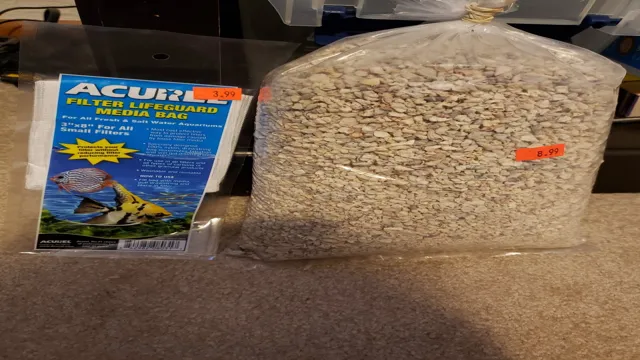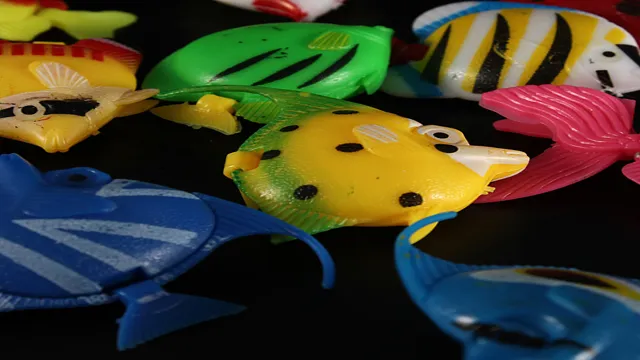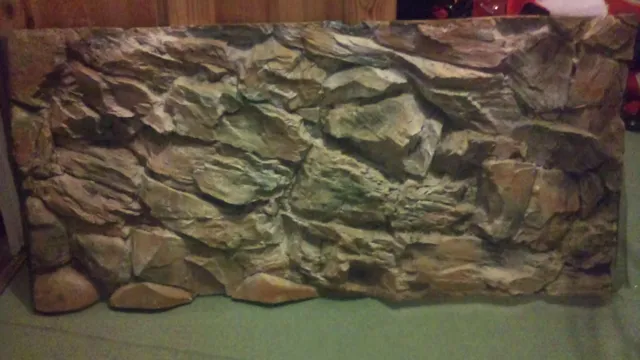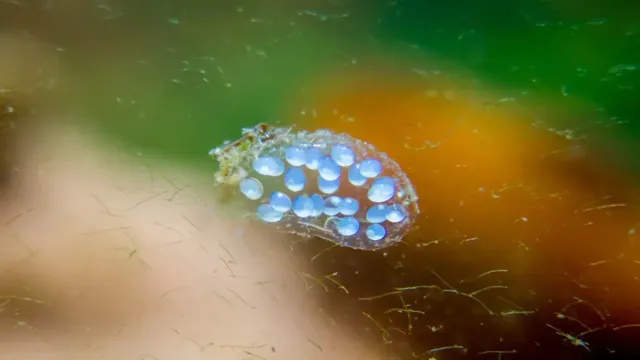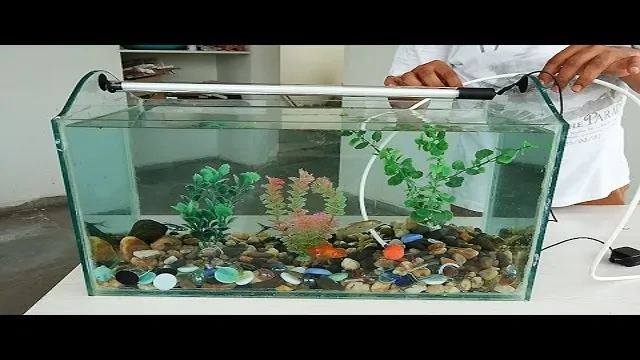Are copepods taking over your saltwater aquarium? These small crustaceans are a common occurrence in marine tanks, but an overpopulation of them can cause harm to your marine life. Copepods are known to consume coral and fish eggs and may even irritate your fish. Don’t worry, though, there are ways to get rid of these pesky creatures without harming the inhabitants of your tank.
One of the first steps in getting rid of copepods is to ensure that you’re not overfeeding your fish. Excess food can lead to an overpopulation of copepods, as well as other harmful creatures. You should also regularly clean your tank and filter to prevent any buildup of waste that may attract copepods.
Another solution could be introducing predatory fish or invertebrates that eat copepods, such as mandarin fish, wrasses, and peppermint shrimp. However, it’s important to research these creatures beforehand to ensure they’re compatible with the existing marine life in your tank. If all else fails, you can also try using a specialized product designed to eliminate copepods.
However, be cautious and follow the instructions carefully, as some products can be harmful to your marine life if not used properly. Overall, getting rid of copepods in your saltwater aquarium may take some effort and patience, but it’s worth it to maintain the health and harmony of your marine environment.
Identifying Copepods and Their Role in Your Aquarium
If you’re looking to get rid of copepods in your saltwater aquarium, there are a few things you need to know first. Copepods are actually beneficial to your tank – they’re small crustaceans that help keep your water clean by consuming excess food and waste. However, in high numbers they can be unsightly and some fish may find them tasty.
To reduce their population, you can try feeding your fish less often or removing uneaten food. You can also add predators like mandarin fish or peppermint shrimp, which will feed on the copepods. However, it’s important to note that completely getting rid of copepods is not recommended, as they play a crucial role in maintaining the balance of your aquarium’s ecosystem.
So instead of trying to eliminate them completely, try finding a balance that works for you and your tank.
What Are Copepods?
Copepods are tiny crustaceans that can be found in both freshwater and saltwater environments. In the aquarium world, they are a popular food source for several types of fish and other marine organisms. Identifying these little creatures can be challenging, as they come in different shapes, sizes, and colors.
However, some physical characteristics can help you recognize copepods, such as their long antennae and the two segments in their body. Despite their small size, copepods play a crucial role in your aquarium ecosystem. They are part of the zooplankton community and help to maintain water quality by consuming detritus and excess nutrients, reducing the risk of algal blooms.
Also, copepods are a highly nutritious food source for fish and invertebrates, essential to their growth and health. In summary, when managing an aquarium, copepods are one of those small yet essential creatures that require attention and care. Recognizing and appreciating their significance can lead to a more balanced and thriving ecosystem.
So, if you notice some tiny swimmers in your aquarium, take a closer look, and you might have found some copepods.
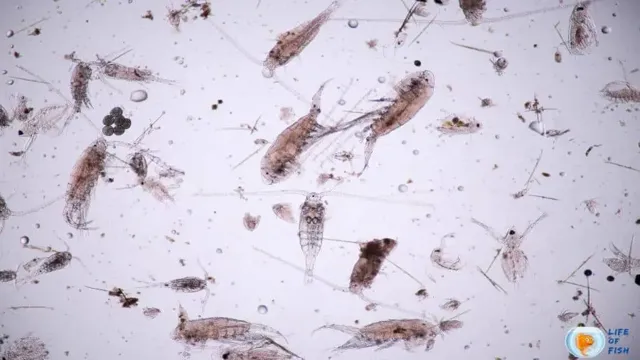
The Benefits and Drawbacks of Having Copepods in Your Aquarium
Copepods are tiny crustaceans that are often found in marine and freshwater aquariums. Despite their small size, they play an important role in the ecosystem of your aquarium. Copepods are an excellent food source for many fish and invertebrates, making them a valuable addition to your tank’s food chain.
They also help to control algae growth, which can be a problem in many aquariums. However, there are also drawbacks to having copepods in your aquarium. Copepods can reproduce rapidly and can quickly become overpopulated, which can lead to water quality issues if not managed properly. (See Also: How to Keep Acrylic Aquarium Clean Without Scratching: Expert Tips and Tricks.)
In addition, some species of copepods may prey on desirable microorganisms and other beneficial species in your aquarium. It’s important to do your research before adding copepods to your aquarium and to keep a close eye on their population levels. Overall, copepods can be a beneficial addition to your aquarium, but it’s important to understand their role and potential drawbacks before adding them to your tank’s ecosystem.
Preventative Measures to Avoid Copepod Overpopulation
If you’re struggling with copepod overpopulation in your saltwater aquarium, there are preventative measures you can take to avoid this issue altogether. First and foremost, it’s important to keep your tank clean and well-maintained. Regular water changes and proper filtration can go a long way in preventing copepod overgrowth.
Additionally, it’s helpful to limit the amount of food you’re providing your fish and invertebrates, as copepods thrive in environments with excess nutrients. You can also try adding natural predators to your tank, such as certain types of fish or shrimp, to help keep copepod populations in check. By taking these precautions, you can avoid copepod overgrowth and maintain a healthy, balanced ecosystem in your saltwater aquarium.
Maintain Proper Water Parameters
Copepod overpopulation can be prevented by maintaining proper water parameters in aquariums. This means constantly monitoring the temperature, pH, and salinity levels of the water to ensure they are within the appropriate range. When these levels are off, it can cause stress to the copepods, leading to issues with reproduction and survival.
Additionally, maintaining proper filtration and circulation can also play a role in preventing overpopulation. By regularly cleaning the tank and providing enough flow, excess waste and debris can be removed, providing a healthier environment overall. Remember, prevention is key when it comes to copepod overpopulation, so taking these preventative measures can save you a lot of headache in the long run.
Keeping Your Aquarium Clean
If you’re a fish-keeping enthusiast, then keeping your aquarium clean must be one of your top priorities. And one of the biggest problems that fish-keepers face is the overpopulation of copepods. Copepods are small crustaceans that serve as an excellent source of food for many fish species.
However, if left unchecked, they can quickly multiply and become a nuisance. To prevent copepod overpopulation, it’s essential to maintain good aquarium hygiene. Firstly, you need to avoid overfeeding your fish, as uneaten fish food is often a breeding ground for copepods.
Secondly, you should regularly clean your aquarium and water filter as they can accumulate excess nutrients and organic matter, encouraging copepod growth. Lastly, to control copepod populations, you can introduce natural predators such as certain species of marine snails or other beneficial fish into your aquarium. By following these preventative measures, you can keep your aquarium and fish healthy and happy while avoiding copepod overpopulation.
Avoid Overfeeding Your Fish
If you’re a fish enthusiast, you know the importance of feeding your fish the right amount. Overfeeding can cause a whole plethora of issues, including overpopulation of copepods. These little guys may seem harmless, but when left to multiply uncontrollably, they can quickly take over your aquarium.
Fortunately, preventing copepod overpopulation is relatively easy with a few preventative measures. Firstly, avoid overfeeding your fish. Only give them the amount they can consume within a few minutes.
Next, make sure to clean out any uneaten food to prevent it from decomposing and adding to the nutritional levels of the water. Regular water changes and adequate filtration can help eliminate any excess nutrients. By following these steps, you’ll decrease the likelihood of copepod overpopulation and keep your aquarium healthy and balanced.
Ways to Control and Reduce Copepod Population
If you notice a sudden explosion of copepods in your saltwater aquarium, don’t panic! There are ways to control and reduce their population. One effective method is to manually remove them using a fine mesh net or turkey baster. Another option is to reduce their food source, namely phytoplankton and other microorganisms, by decreasing feeding or implementing a protein skimmer.
Adding predatory animals such as arrow crabs, mandarin gobies, or sixline wrasses can also help control copepod populations. If you prefer a more natural approach, introducing copepod-consuming animals like amphipods or mysid shrimp can aid in keeping their numbers in check. Overall, getting rid of copepods in a saltwater aquarium may take some time and effort, but with the right techniques, it’s definitely achievable. (See Also: How to Clean Empty Aquarium: A Comprehensive Guide for Sparkling Clean Tanks)
Copper-Based Medications
Copper-Based Medications Copepod outbreaks can cause chaos in aquariums and fish ponds. Fortunately, there are several effective methods available to control and reduce copepod populations. One such way is using copper-based medications.
These medications are specially formulated to kill copepods and other nuisance pests in the water without causing harm to fish or plants. They work by disrupting the cellular processes of these pests and preventing them from reproducing, effectively reducing their population. It is important to note, however, that copper-based medications must be used carefully and in the correct dosage as they can be harmful to sensitive marine life.
Additionally, regular water changes and proper maintenance practices should also be implemented to keep copepod populations under control. By using copper-based medications and practicing good aquarium hygiene, copepod infestations can be effectively managed, allowing the rest of your aquatic life to flourish.
Mechanical Methods
Copepod population control has long been a topic of concern for fish farmers and those in the aquaculture industry. Mechanical methods offer effective ways of reducing their numbers. One such method involves the use of mesh nets to prevent copepod penetration.
These nets, which are fine enough to prevent copepod entry, are highly effective at controlling numbers by acting as a barrier to their growth and development. Similarly, certain pumps can be used to suck copepods from the water and reduce their numbers. Another mechanical method is the use of ultraviolet (UV) filters, which are highly efficient at killing copepods and other unwanted organisms.
Although these mechanical methods are effective, they need to be implemented with care as they can have negative impacts on other aquatic organisms. However, with proper implementation, they can be a useful tool for reducing copepod populations and maintaining healthy aquatic ecosystems.
Natural Predators
Copepods, Natural Predators, Control, Reduce Copepods are tiny crustaceans that are found in both freshwater and saltwater. They play an important role in the aquatic food chain, but when left unchecked, their population can explode, causing significant problems. One effective method of controlling and reducing copepod population is by introducing natural predators.
For example, certain species of fish, such as the molly, guppy, and killifish, feed on copepods, and can help to keep their population in check. Another natural predator of copepods is the water flea, which is a type of zooplankton that feeds on copepods and other small organisms. Water fleas are not harmful to humans and can be easily introduced to a body of water.
Additionally, zooplankton can be added to the water to reduce the copepod population without harming other aquatic organisms. Overall, introducing natural predators is an effective and eco-friendly method of controlling and reducing copepod populations.
Final Thoughts and Tips on Copepod Management in Your Saltwater Aquarium
If you’re struggling with an overabundance of copepods in your saltwater aquarium, there are a few approaches you can take to reduce their population. One option is to introduce predators, such as certain species of fish or invertebrates. However, this can be tricky as you need to ensure the predator won’t harm your other tank inhabitants.
Another option is to limit their food source, which means reducing the amount of detritus in your tank. This can be achieved by increasing your cleaning routine and being mindful of the amount of food you add to the tank. Lastly, you can physically remove them using a fine mesh net or siphoning them out during water changes.
It’s important to keep in mind that in small amounts, copepods can actually benefit your tank. They help with waste management and provide an important source of food for certain organisms. Striking a balance is key in all aspects of aquarium management, and copepods are no exception. (See Also: How to Catch a Mantis Shrimp in Your Aquarium: A Comprehensive Guide for Beginners)
Conclusion
In the battle against copepods in your saltwater aquarium, one must channel their inner Sun Tzu: know thy enemy. While copepods may seem like a nuisance, they actually play a vital role in the ecosystem of your tank. So, rather than attempting to completely eradicate them, focus on managing their numbers through regular feedings, water changes, and introducing predatory species like certain wrasses or arrow crabs.
Remember, the key to success is not to defeat your opponent, but to coexist with them in a harmonious and balanced environment. “
FAQs
What are copepods in saltwater aquariums?
Copepods are small, crustacean-like creatures that inhabit saltwater aquariums and are often used as a source of food for larger marine life.
How do copepods get into a saltwater aquarium?
Copepods can enter a saltwater aquarium through live rock, live sand, or even with new marine life introductions.
Are copepods harmful to saltwater aquariums?
No, copepods are not harmful to saltwater aquariums. They actually play an important role in maintaining the overall health of the aquarium ecosystem.
What can cause a sudden bloom of copepods in a saltwater aquarium?
Environmental factors such as temperature, nutrient levels, and light can trigger a sudden increase in copepod populations in a saltwater aquarium.
How can I control the population of copepods in my saltwater aquarium?
Controlling the population of copepods can be done through manual removal or introducing natural predators such as mandarin fish or dragonets.
Can copepods be beneficial to specific marine life in a saltwater aquarium?
Yes, copepods are an excellent source of food and energy for certain marine life such as seahorses, clownfish, and various species of coral.
What are some methods to prevent a copepod outbreak in a saltwater aquarium?
To prevent copepod outbreaks, it is recommended to quarantine live rock or live sand before adding it to the aquarium, as well as to check and adjust nutrient levels and lighting regularly.


